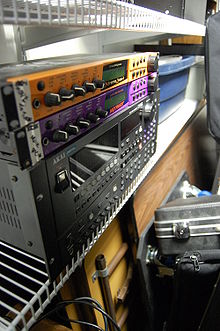
Emu Proteus 2500 Software
Nov 28, 2014 proteus 2500 sequenziato via doepfer a-192-2 da analogue solutions sq 416 abbinato a modulo custom iniez pp4(play-pausex4) clock doepfer a. Emu Proteus 2500 Software' title='Emu Proteus 2500 Software' />Download Update. Download the. Free trial version below to get started.
Good luck and kind regards. Download software telko s008b user manual.
Emu's synths may have broken no new ground since the 1999 launch of the Proteus 2000, but the new 2500 plays to their strengths, offering the best of their sound library, plus excellent sequencing and real-time control capabilities, at a very attractive price. I think we all go through periods where we start to feel we've seen it all.
Sometimes even the latest all-singing, all-dancing box of hi-tech delights fails to excite, like a book with a flashy new cover concealing a story we know we've read before. So it was that when asked to review a new Emu module, I mentally dismissed it as 'just another Proteus with a few knobs added'. However, sometimes you need to step back before cynicism overwhelms you completely, because when the Proteus 2500 arrived chez Nagle, I warmed instantly to its control-rich user interface and serious blue-grey styling. Furthermore, my initial lack of enthusiasm underwent a complete reversal as I began to translate those on-paper specs into real music-making power. Years of familiarity with Emu modules tends to dull the impact of just how well they have stood the test of time. Their design is utterly simple in principle, and has evolved slowly, gaining a feature here, some Z-plane filters there, and dipping a tentative toe into digital effects.
The Proteus 2500 represents a significant stride forward, not least in its appearance. An impressive 4U high, it features the standard (ie. Small) Proteus two-line display, plus a green LED numeric display, 16 multi-function knobs (complete with adjacent red LEDs), a sequencer, arpeggiator and many edit buttons that make operation a breeze. As you can see, it is essentially a workstation-based module with an interface designed for both synthesis and sequencing. And the onboard sound engine is well suited to sequencing work, with its impressive 128-note polyphony and 32-part multitimbrality (more on this in a moment).
Software 2700 nokia app phoney. If you think all this seems rather familiar, you're right. The Proteus 2500 is closer in spec to the recent Emu MP7 and XL7 Command Stations than previous Proteus models, though it shares many characteristics with the Proteus 2000 as well. So, rather than re-examine every knob and button, I suggest a quick study of the Command Station (SOS November 2001) and (SOS March 1999) reviews in combination with this one.

Due to the 2500's well-conceived interface, the display size is rarely an issue, except for those times when you need to tab around several fields with the cursor keys, when it does start to feel like a few presses too many. One of the most useful buttons, the Track/Channel selector, is directly adjacent to the display. This selects the current track or instrument or, in Preset Edit mode, the layers that make up an individual sound. At the highest level of operation, the Mode/View buttons (below) offer Song, Pattern, Preset or Mix options, changing both the mode and what is currently shown in the display. Beneath these, the green LED shows current values for either tempo, pattern number, bar/beat or track/channel (see below). If I have any complaint about the interface, it is a minor one: the blue-on-black text is a little hard to read in low-light conditions. Otherwise, I found it superb — and that's the first time I've thought that about any Proteus module!